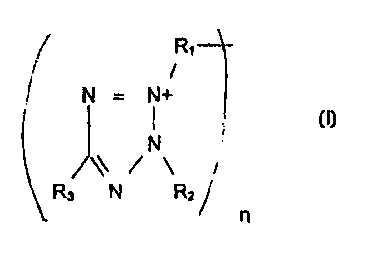Une partie des informations de ce site Web a été fournie par des sources externes. Le gouvernement du Canada n'assume aucune responsabilité concernant la précision, l'actualité ou la fiabilité des informations fournies par les sources externes. Les utilisateurs qui désirent employer cette information devraient consulter directement la source des informations. Le contenu fourni par les sources externes n'est pas assujetti aux exigences sur les langues officielles, la protection des renseignements personnels et l'accessibilité.
L'apparition de différences dans le texte et l'image des Revendications et de l'Abrégé dépend du moment auquel le document est publié. Les textes des Revendications et de l'Abrégé sont affichés :
| (12) Demande de brevet: | (11) CA 2339982 |
|---|---|
| (54) Titre français: | INHIBITION DE LA CORROSION DANS DES SYSTEMES AQUEUX |
| (54) Titre anglais: | INHIBITION OF CORROSION IN AQUEOUS SYSTEMS |
| Statut: | Réputée abandonnée et au-delà du délai pour le rétablissement - en attente de la réponse à l’avis de communication rejetée |
| (51) Classification internationale des brevets (CIB): |
|
|---|---|
| (72) Inventeurs : |
|
| (73) Titulaires : |
|
| (71) Demandeurs : |
|
| (74) Agent: | MOFFAT & CO. |
| (74) Co-agent: | |
| (45) Délivré: | |
| (86) Date de dépôt PCT: | 1999-08-04 |
| (87) Mise à la disponibilité du public: | 2000-03-02 |
| Requête d'examen: | 2002-02-07 |
| Licence disponible: | S.O. |
| Cédé au domaine public: | S.O. |
| (25) Langue des documents déposés: | Anglais |
| Traité de coopération en matière de brevets (PCT): | Oui |
|---|---|
| (86) Numéro de la demande PCT: | PCT/US1999/017656 |
| (87) Numéro de publication internationale PCT: | WO 2000011239 |
| (85) Entrée nationale: | 2001-02-08 |
| (30) Données de priorité de la demande: | ||||||
|---|---|---|---|---|---|---|
|
L'invention concerne un procédé de lutte contre la corrosion des métaux, en particulier des métaux à base de fer en contact avec des systèmes aqueux, ce procédé consistant notamment à traiter des eaux industrielles au moyen d'un sel de tétrazolium de formule générale (I), dans laquelle R¿1?, R¿2?, et R¿3? peuvent représenter divers substituants organiques ou inorganiques, y compris des monomères ou des oligomères de la formule susmentionnée.
A method for controlling corrosion of metals, particularly ferrous-based
metals in contact with aqueous systems is disclosed, which includes treating
industrial waters with a tetrazolium salt of general formula (I) wherein R1,
R2, and R3 may be various organic or inorganic substituents, including
monomers or oligomers of the above structure.
Note : Les revendications sont présentées dans la langue officielle dans laquelle elles ont été soumises.
Note : Les descriptions sont présentées dans la langue officielle dans laquelle elles ont été soumises.

2024-08-01 : Dans le cadre de la transition vers les Brevets de nouvelle génération (BNG), la base de données sur les brevets canadiens (BDBC) contient désormais un Historique d'événement plus détaillé, qui reproduit le Journal des événements de notre nouvelle solution interne.
Veuillez noter que les événements débutant par « Inactive : » se réfèrent à des événements qui ne sont plus utilisés dans notre nouvelle solution interne.
Pour une meilleure compréhension de l'état de la demande ou brevet qui figure sur cette page, la rubrique Mise en garde , et les descriptions de Brevet , Historique d'événement , Taxes périodiques et Historique des paiements devraient être consultées.
| Description | Date |
|---|---|
| Inactive : CIB de MCD | 2006-03-12 |
| Inactive : CIB de MCD | 2006-03-12 |
| Inactive : CIB de MCD | 2006-03-12 |
| Le délai pour l'annulation est expiré | 2005-08-04 |
| Demande non rétablie avant l'échéance | 2005-08-04 |
| Inactive : Abandon. - Aucune rép. dem. art.29 Règles | 2004-12-03 |
| Inactive : Abandon. - Aucune rép dem par.30(2) Règles | 2004-12-03 |
| Réputée abandonnée - omission de répondre à un avis sur les taxes pour le maintien en état | 2004-08-04 |
| Inactive : Dem. de l'examinateur art.29 Règles | 2004-06-03 |
| Inactive : Dem. de l'examinateur par.30(2) Règles | 2004-06-03 |
| Lettre envoyée | 2002-03-12 |
| Requête d'examen reçue | 2002-02-07 |
| Exigences pour une requête d'examen - jugée conforme | 2002-02-07 |
| Toutes les exigences pour l'examen - jugée conforme | 2002-02-07 |
| Inactive : Page couverture publiée | 2001-05-11 |
| Lettre envoyée | 2001-04-12 |
| Inactive : Notice - Entrée phase nat. - Pas de RE | 2001-04-12 |
| Inactive : CIB en 1re position | 2001-04-12 |
| Demande reçue - PCT | 2001-04-07 |
| Demande publiée (accessible au public) | 2000-03-02 |
| Date d'abandonnement | Raison | Date de rétablissement |
|---|---|---|
| 2004-08-04 |
Le dernier paiement a été reçu le 2003-07-22
Avis : Si le paiement en totalité n'a pas été reçu au plus tard à la date indiquée, une taxe supplémentaire peut être imposée, soit une des taxes suivantes :
Veuillez vous référer à la page web des taxes sur les brevets de l'OPIC pour voir tous les montants actuels des taxes.
| Type de taxes | Anniversaire | Échéance | Date payée |
|---|---|---|---|
| Taxe nationale de base - générale | 2001-02-08 | ||
| Enregistrement d'un document | 2001-02-08 | ||
| TM (demande, 2e anniv.) - générale | 02 | 2001-08-06 | 2001-06-29 |
| Requête d'examen - générale | 2002-02-07 | ||
| TM (demande, 3e anniv.) - générale | 03 | 2002-08-05 | 2002-07-02 |
| TM (demande, 4e anniv.) - générale | 04 | 2003-08-04 | 2003-07-22 |
Les titulaires actuels et antérieures au dossier sont affichés en ordre alphabétique.
| Titulaires actuels au dossier |
|---|
| BETZDEARBORN INC. |
| Titulaires antérieures au dossier |
|---|
| KIM A. WHITAKER |
| LONGCHUN CHENG |